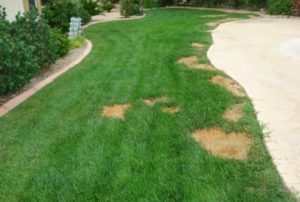As a homeowner, one of the most rewarding sights is a lush, green lawn. It not only enhances the aesthetic appeal of your home but also provides a space for relaxation and play. However, maintaining a healthy lawn can be challenging, especially when faced with lawn disease. But how do you know if your lawn has disease? This blog post will guide you through the signs and symptoms of common lawn diseases and provide tips on how to manage them.
Understanding Lawn Disease
Before we delve into identifying lawn disease, it’s important to understand what it is. Lawn diseases are typically caused by fungi that thrive in specific conditions such as high humidity, excessive moisture, and temperature changes. These fungi can cause various symptoms in your grass ranging from discoloration to patches or even death of the grass.
Signs Your Lawn May Have Disease
The first step in diagnosing lawn disease is observing any changes in your grass’s appearance or growth pattern. Here are some signs that your lawn may be diseased:
1. Discoloration: One of the most common signs of lawn disease is discoloration. This could be yellowing, browning or even reddening of the grass blades.
2. Patches: If you notice circular or irregular patches of discoloured or dying grass on your lawn, this could indicate a fungal disease.
3. Thinning Grass: A thinning or less dense area in an otherwise healthy-looking lawn could also signal a problem.
4. Unusual Growth Patterns: If you see rings or arcs of dark-green, fast-growing grass, this could be a sign of fungal activity beneath the surface.
Common Types Of Lawn Diseases
Now that we’ve covered some general signs let’s look at some specific types of common lawn diseases:
1. Brown Patch: This disease manifests as large circular patches with brown or tan centres and dark outer rings. It thrives in hot, humid conditions.
2. Dollar Spot: Named for the silver-dollar-sized tan spots it creates on grass blades, dollar spot is common in lawns with low nitrogen levels and in moist conditions.
3. Red Thread: This disease presents as red or pink thread-like growths on grass blades. It’s often seen in cool, wet weather and in lawns with low nitrogen levels.
4. Rust: As the name suggests, rust disease causes a rust-like appearance on grass blades due to tiny orange-red spores. It typically occurs in late summer or early fall when the weather is warm but not hot.
Managing Lawn Disease
If you’ve identified signs of lawn disease, don’t panic. There are several steps you can take to manage and prevent further spread:
1. Proper Watering: Overwatering can create a breeding ground for fungi. Water your lawn deeply but infrequently to encourage deep root growth and reduce surface moisture.
2. Regular Mowing: Regular mowing helps keep your grass healthy and reduces the chances of disease spreading.
3. Fertilisation: Keeping your lawn well-fed with the right nutrients can help it resist diseases better.
4. Aeration: Compacted soil can lead to poor water drainage, creating ideal conditions for fungi. Aerate your lawn regularly to improve soil structure and drainage.
5. Disease-Resistant Grass Varieties: If you’re planning to reseed or overseed your lawn, consider using disease-resistant grass varieties that are suited to your local climate and soil conditions.
In conclusion, identifying lawn disease requires careful observation of changes in your grass’s appearance and growth patterns. By understanding these signs and knowing how to manage them effectively, you can maintain a lush, healthy lawn that’s the envy of the neighbourhood.
Remember that prevention is always better than cure when it comes to lawn diseases; proper watering practices, regular mowing, and appropriate fertilization can go a long way in keeping your lawn disease-free. If you’re unsure about diagnosing or treating lawn disease, consider consulting with a lawn care professional. They can provide expert advice tailored to your specific lawn conditions and needs.
Check our our help guide on identifying lawn diseases and disorders here.. Lawn Diseases & Disorders
